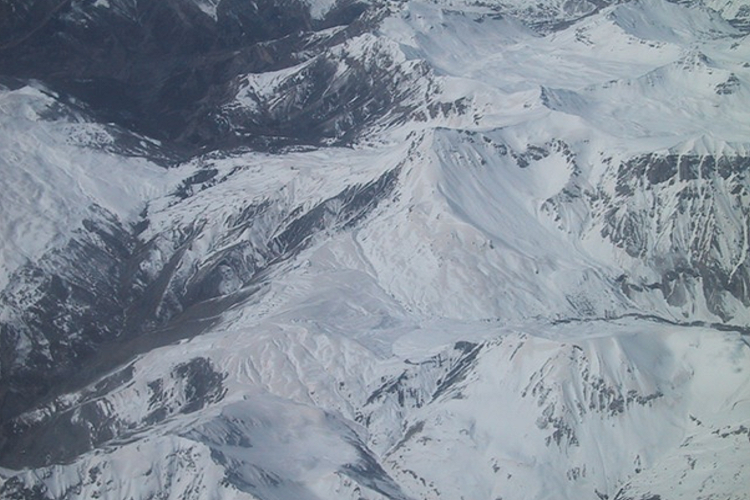Aerosols - small heaters in snow
The importance of aerosols for our climate system has gradually gained more attention. The small particles in the air play a very important role in many respects. For example, they influence radiation and cloud processes in the atmosphere. Depending on their size and chemical composition, they have a high medical relevance at ground level, as they can enter our respiratory system. However, the role of aerosols after their deposition is currently still largely unclear. For example, in arid areas, the wind lifts mineral dust into the air and transports it over long distances. In this way, the particles from the Sahara can reach us in large quantities or even cross the Atlantic. Over time, sedimentation takes place and the particles are deposited on the surface. Such a dust layer changes the optical properties of the respective surface. This influence can be most clearly observed on snow surfaces. For example, if you fly over the Alps or hike over snow-covered areas, you often see greyish or yellow-brownish tones instead of bright white surfaces (Fig.1). These contaminations are mostly due to depositions of mineral dust, soot or other particles that visibly affect the optical properties of the snow surface. The dark impurities increase the absorption of solar radiation and heat the surface. The snow cover reacts to this with increased snow melting and reduced snow depth. As a result, the outflow regime can change in many regions, with serious consequences for the water supply.
| Fig.1: Snapshot of the Alps on overflight. Deposition of mineral dust causes a greyish to brownish tint of the snow cover. |
Only in recent years has the topic once again come to the foreground, as the aerosol is said to play a greater role in the melting of snow and glaciers. Since September 2017 I (Anika Rohde) am working on this exciting topic as part of my doctoral thesis. Using the ICON-ART model (ICOsahedral Nonhydrostatic Model - Aerosols and Reactive Trace gases), global and regional simulations can be performed that take into account the emission, transport and sedimentation of aerosols. Currently, it is not yet possible to calculate the change of the reflectivity of snow surfaces depending on the actual concentration of the particles. My aim for this project is to extend the model so that the influence of the deposited aerosols on the optical properties can be reproduced. With simulations in snowcovered areas, we would like to get a better impression of the influence of aerosols. We hope to gain a better understanding of the role of aerosols in the radiation balance and furthermore to be able to estimate the associated consequences.
[Working group: Aerosols, Trace Gases and Climate Processes]

